There was recently a question thrown out on a public forum that I’ll paraphrase and make more specific here: “How big do you have to print before you can see the difference between the GFX 50x and GFX 100x cameras?”
My answer:
The pixel aperture of the GFX 100x and GFX 50x is the same when measured in micrometers. The sensor’s effect on sharpening is the same on a per-um basis for both cameras. The sensors are the same physical size, so the sensor’s effect on sharpening is the same on a per-picture-height basis for both cameras. The difference is that the GFX 100x image shows less aliasing. Since aliased frequencies go all the way to dc, there is no practical lower limit of print size below which the GFX 100x and GFX 50x images will look the same.
So the answer to your question comes down to the choice of subject matter, and photographic technique.
Of course, I received a lot of pushback. People said that, at — pick one — letter size, or C size, or 30×40 inches, you won’t see any difference at all between those cameras, no matter what the subject matter. Of course, no proof was provided — you can’t prove a negative.
I, on the other hand, had an easier time of it, since I only had to prove a positive.
I created the following spreadsheet:
Using Excel’s color conventions, the orange-shaded cells are inputs, and the gray-shaded cells with the orang letters are the results. Oh, I see I made an error. The target distance is also a calculated result.
I wrote a Matlab program to produce a 20×15 inch sinusoidal grating the varied from a 10-pixel period to a 40-pixel period. I set it on a stand, 5.6m from a GFX 50S with a 45mm lens set to ISO 100 and f/5.6. I focused manually and used a 2-second self timer. I developed the image in Lightroom with default settings.
Here’s the image, rezzed down by Lightroom to 1000 pixels wide:
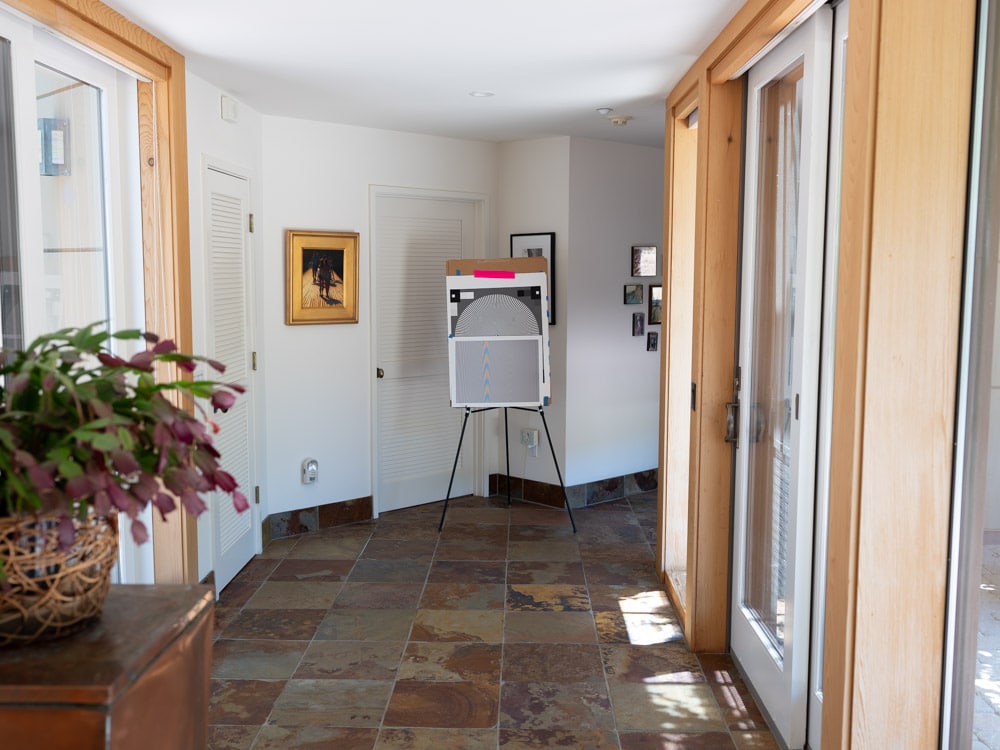
See the false color?
Now, using the GFX 100S under the same conditions:
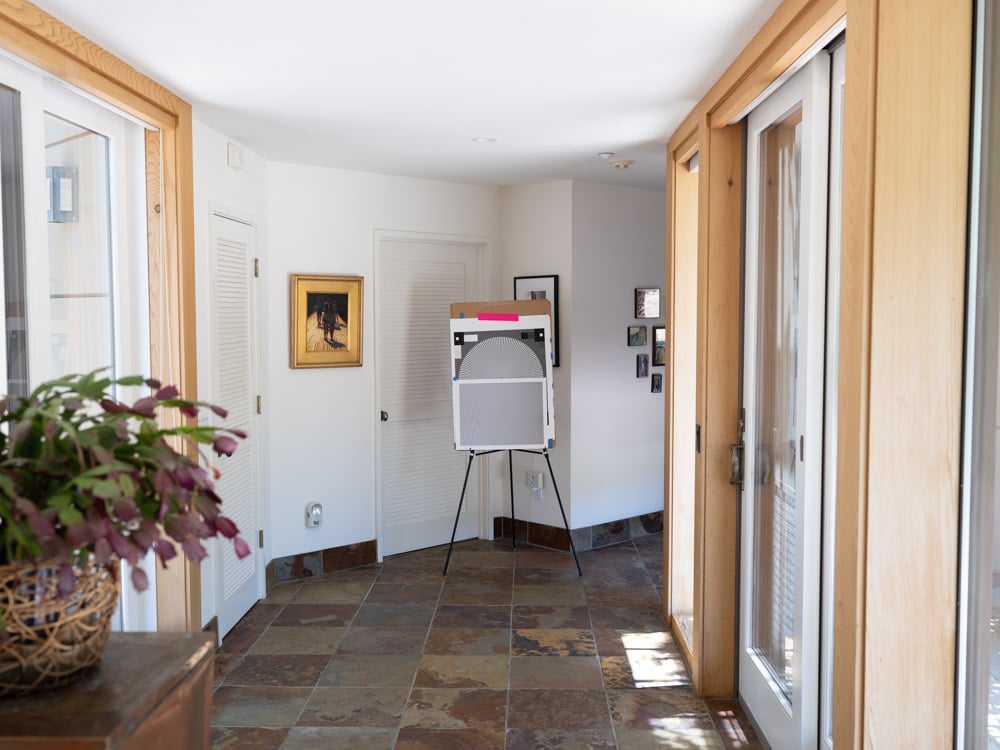
Not so much false color.
Zooming in a bit:
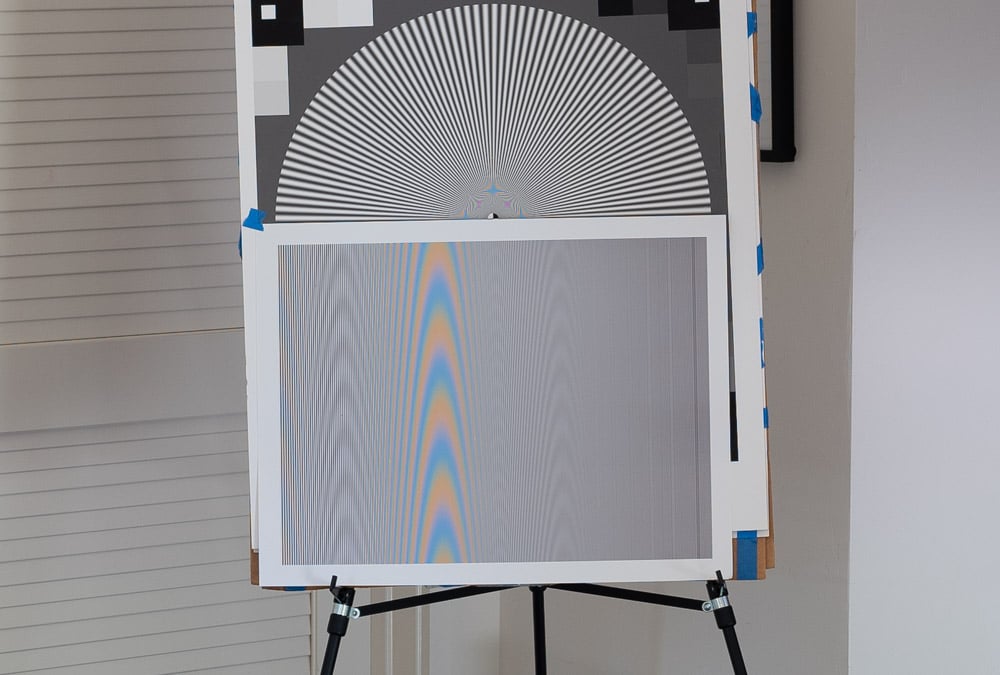
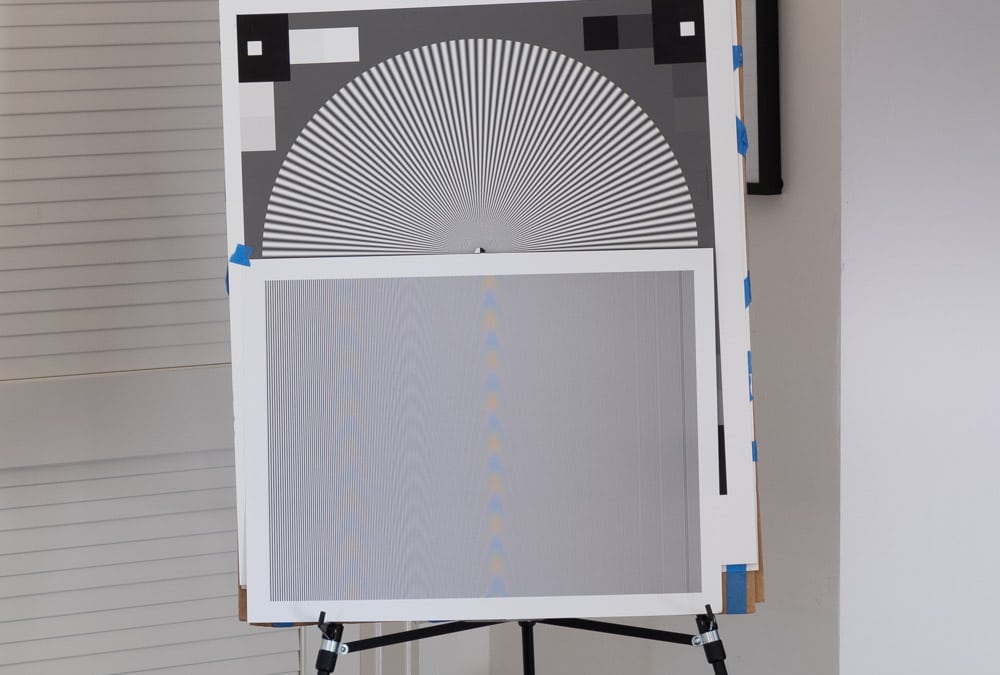
If I stopped the lens down a bit more, I’m sure I could find a stop where the GFX 100S showed no aliasing, and the GFX 50S showed some aliasing that caused false color over a broad area. I could also create a grating that goes between a 40-pixel and a 20-pixel period, and eliminate the false color from the GFX 100S image.
[Added] I did both those things:
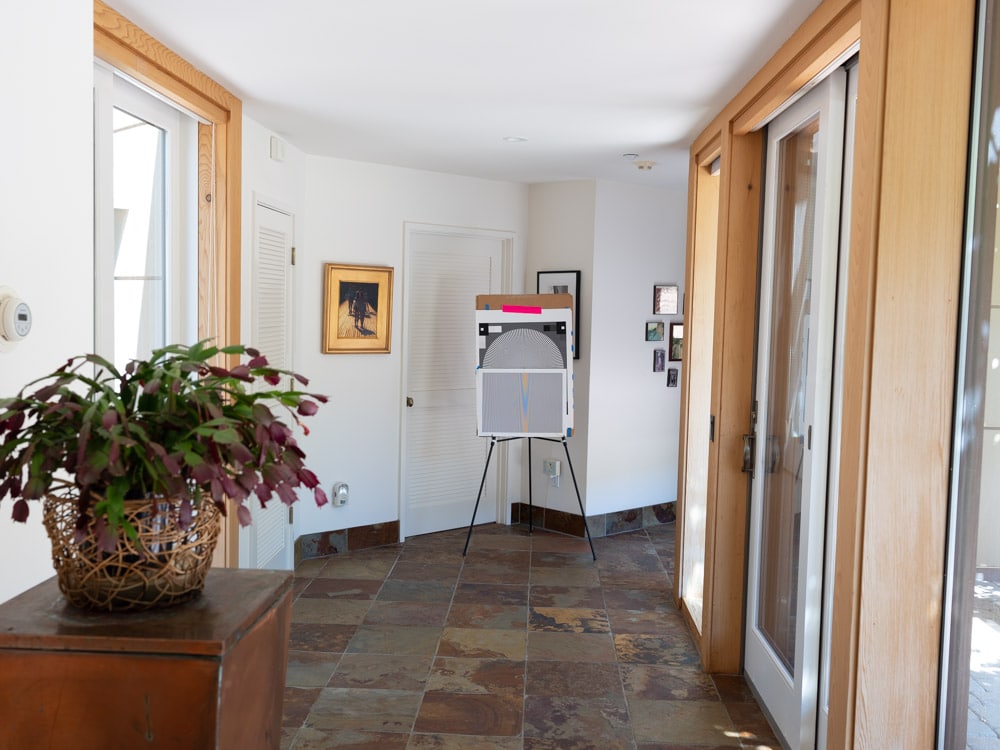
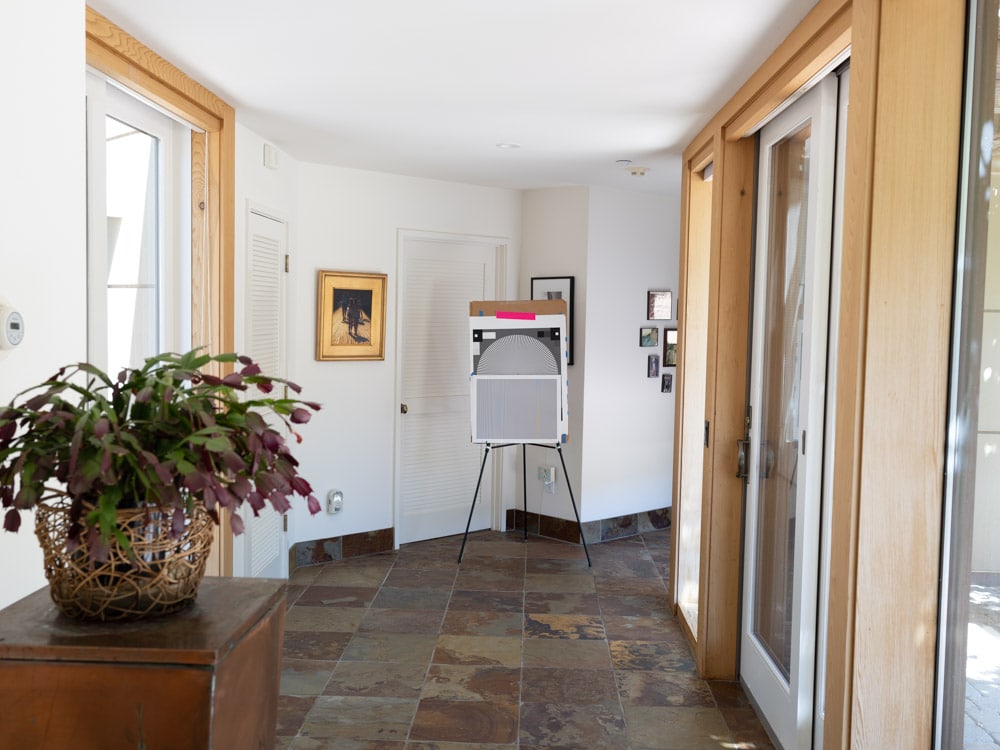
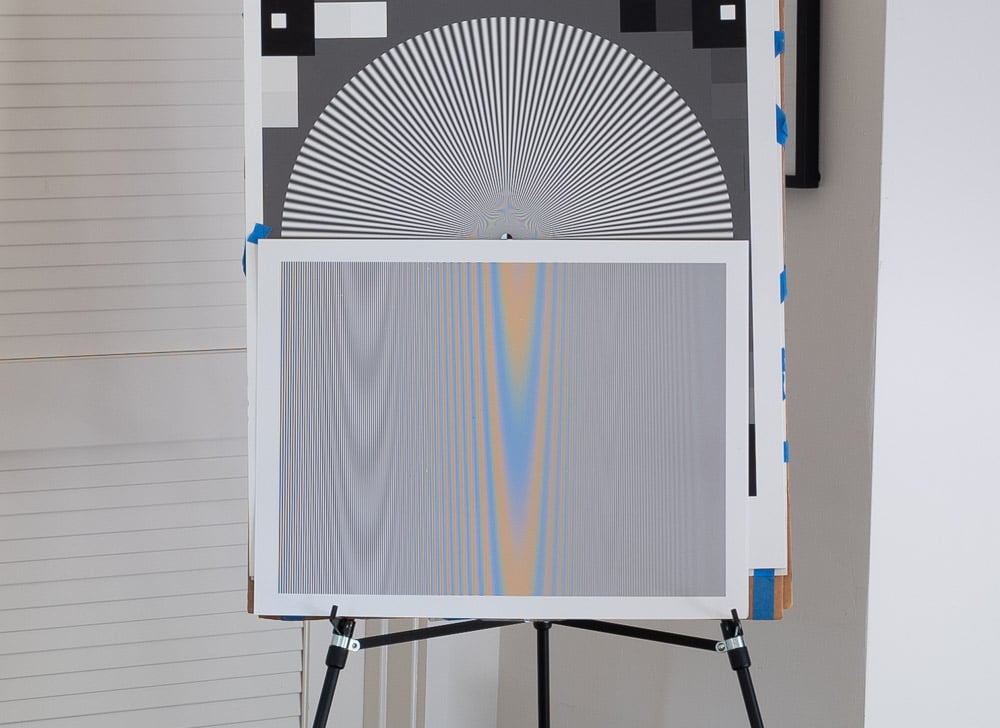
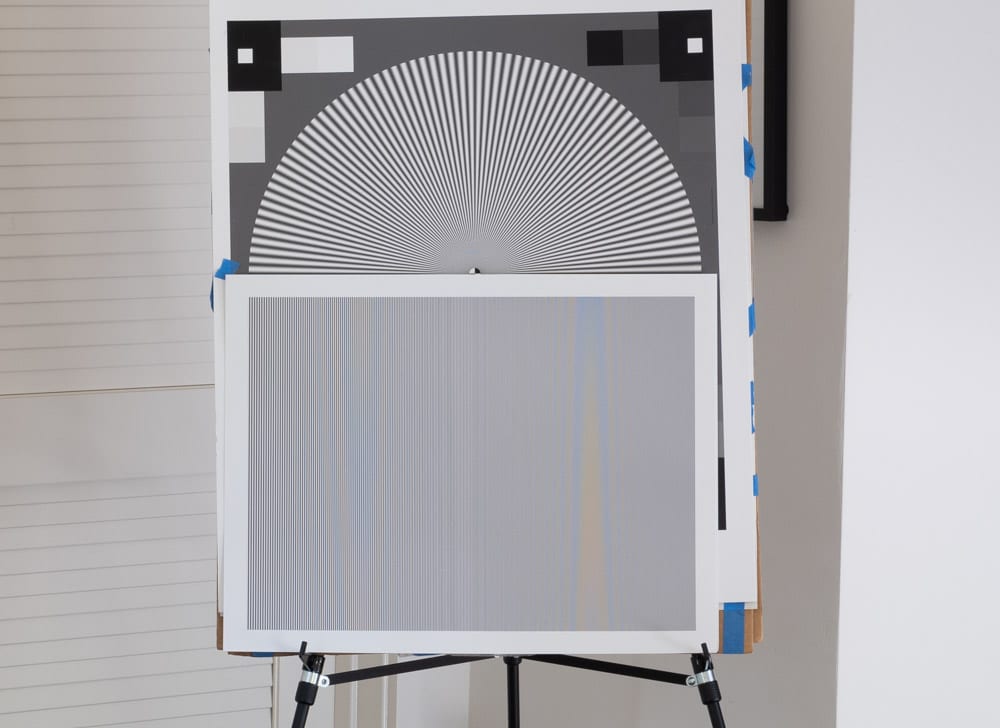
I think this proves my point. Note that this test does no constitute proof that you’ll be able to see a difference between the GFX 100S and GFX 50S at small print sizes with any arbitrary scene, only that you will be able to see a difference sometimes.
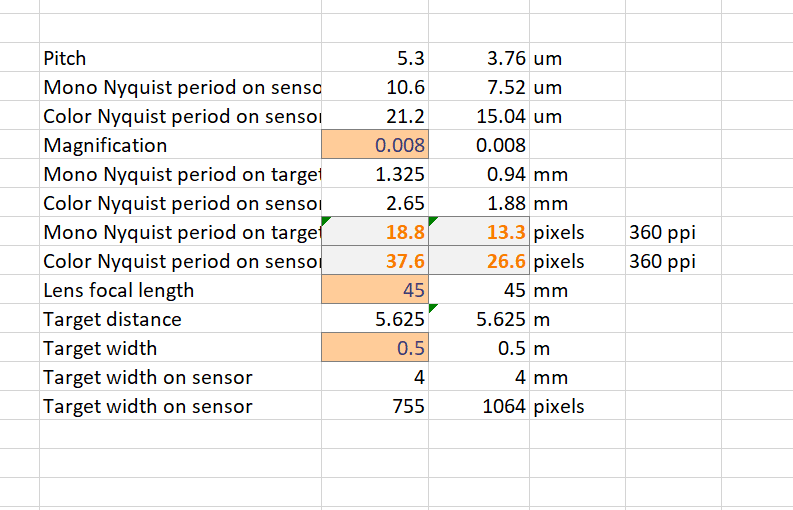
Leave a Reply